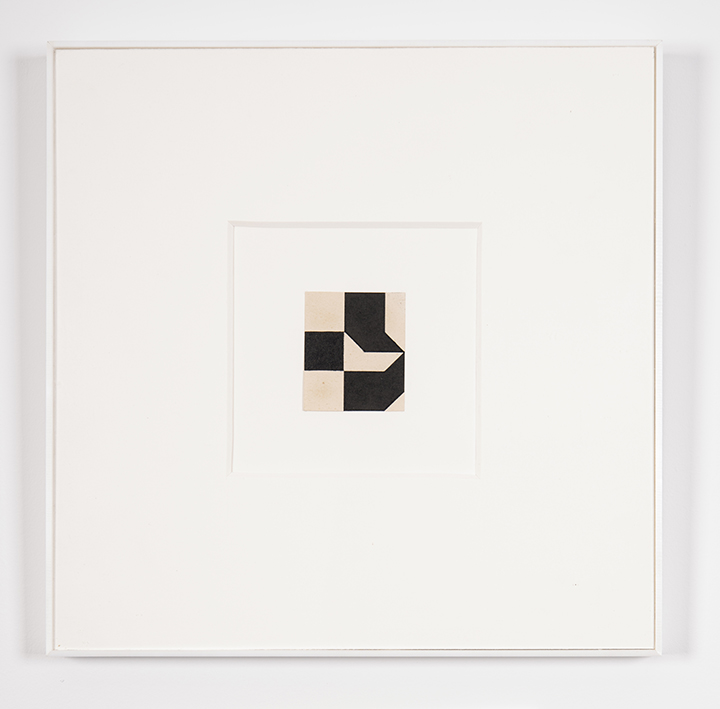De Castro was a visual artist as well as a successful poet, graphic, industrial and stage designer, musician, art curator and magazine editor. In the visual arts, he was active in the founding of the Neo-Concrete art movement in 1959. The Neo-Concrete manifesto states that art should connect and interact with the viewer in an expressive space. The multi-sensorial experience of art depended on feedback between the object and the spectator and this could not be achieved solely by objective mathematical formulas. These were claimed by Concrete Artists as the only necessary components of a transcendental visual language. The two, small works, both titled, Abstrato (Sem ttulo) (1957/58) use negative and positive space to form three-dimensional shapes which rely on the viewer to “complete’ them in their minds. The spatial element of the works thus relies on the active gaze of the viewer. Later in de Castro’s practice he would take this activation further in a series of works titled Active objects, which were closely associated with the study of phenomenology: that objective experience is rooted in the individual’s perception thereof.
DE CASTRO Willys

Willys DE CASTRO
Untitled, 1957/1958
Gouache on paper
2 3/8 x 1 15/16 in. (6.03 x 4.92 cm.)
